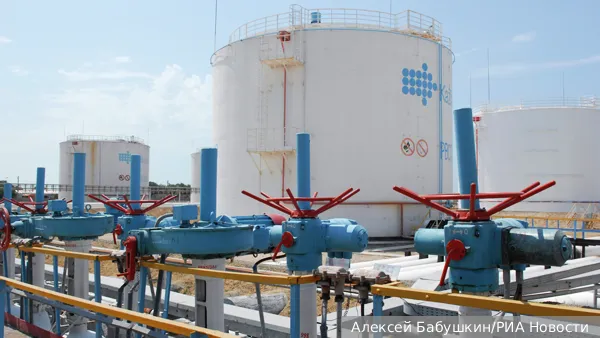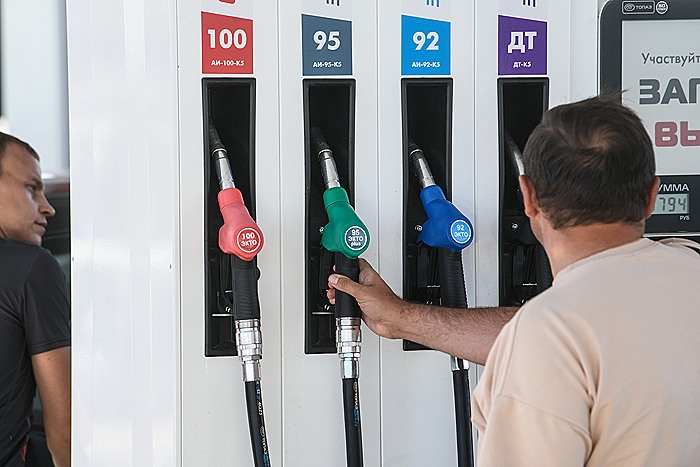What the U.S. and EU Agreed Upon
The negotiations between American President Donald Trump and European Commission President Ursula von der Leyen in Scotland resulted in a framework trade agreement. In this accord, European goods exported to the U.S. will be taxed at a 15% rate instead of the previously promised 30%. In return for the reduced tariff, the EU agreed to allow duty-free imports of U.S. goods, increase investments in the country to $600 billion, and guarantee demand for military equipment and energy resources. Regarding energy supplies, Europe pledged to move away from Russian oil and gas and to purchase U.S. energy totaling $250 billion annually during Donald Trump’s administration. In Glasgow, Ursula von der Leyen stated that the EU no longer wishes to depend on Russian resources, noting that American LNG is “far superior.” According to her, the bloc's assessments are based on the existing plan to cease reliance on Russian fossil fuels and procure “more accessible and higher quality” liquefied natural gas from American producers. Currently, the agreement remains preliminary. The European Commission has not commented on when the text of the document will be published or whether it will be approved at the European Council. According to Eurostat, in 2024, the EU spent approximately €370 billion on energy resources worldwide. U.S. exports amounted to around €68 billion (approximately $79 billion), constituting 18% of the total. U.S. shares in LNG imports reached 45.3% (€18.8 billion), while oils and petroleum products accounted for 16.1% (€42 billion). This suggests the ambition of the U.S. to increase its share of energy imports from 18% to 67.5%. Tamara Safonova, Director General of the Independent Analytical Agency for the Oil and Gas Sector (“NAANS-MEDIA”), reminded that Europe became the largest oil-importing region last year, purchasing 463 million tons, or 21% of global oil import flows. Additionally, she noted that petroleum product imports reached 218 million tons, constituting 17% of global totals. Concurrently, Europe reduced LNG imports by 35 billion cubic meters—from 168 billion cubic meters in 2023 to 133 billion in 2024. U.S. exports also declined—from 76 billion cubic meters in 2023 to 61 billion cubic meters in 2024. The expert emphasized that despite the U.S. positioning itself as the largest net exporter of oil, it continues to import significant volumes, primarily from Canada. Total oil imports for 2024 are expected to reach 329 million tons, with exports at 198 million tons.Impact of the Agreement on the U.S.
According to Valery Andrianov, an associate professor at the Financial University under the Government of the Russian Federation, executing a plan to procure $250 billion worth of energy resources from the U.S. annually, while keeping prices the same, will be challenging. “This is highly unlikely, as such rapid growth in U.S. oil and gas production and exports is not feasible. For instance, the U.S. Energy Information Administration (EIA) forecasts that domestic oil production will increase by only 400,000 barrels per day this year to 13.61 million, and reach 13.76 million barrels by 2026. This growth is insufficient for a substantial increase in energy resources sold to Europe,” states the expert. A similar situation applies to gas. By the end of 2024, gas production in the U.S. is expected to decline by 0.3%, with an average growth rate of only 3.9% from 2014 to 2024. This also falls short of the demands required for significant increases in blue fuel exports to Europe. The U.S. already provides 45% of gas supplies to Europe, and several new LNG terminal construction projects are underway in the U.S.; however, these cannot fully replace other supply sources. Achieving a supply value of $250 billion annually is feasible solely under one condition: a significant increase in prices for American energy resources for European consumers. In the case of oil, this would require prices to rise to a minimum of $120 per barrel. This is precisely what the Trump administration seems intent on achieving—entrenching the European economy in extremely costly energy resources, thereby permanently eliminating a dangerous competitor. Coupled with high tariffs on European goods, this could entirely strip the Old World of its remaining competitiveness and cement its role as a Washington satellite, believes the expert. Alexey Grivach, Deputy Director General of the National Energy Security Fund, asserts that the U.S.-EU agreement is primarily a public relations maneuver. “During his previous presidential term, Trump negotiated similar agreements with China. After the tariff war in 2018, Washington and Beijing announced the strengthening of trade cooperation in the energy sector, including U.S. plans for Chinese companies to participate in the construction of an LNG plant in Alaska. But where is that plant now? Meanwhile, China has virtually ceased energy imports from the U.S.,” the expert reminds us. According to Sergey Tereshkin, General Director of Open Oil Market, the EU lacks any tools to compel private companies to source gas from specific suppliers. With the growth in demand in Europe unlikely, particularly due to the development of low-carbon energy, the share of nuclear power plants (NPP) and renewable energy sources (RES) in the EU electricity generation structure increased from 51% in 2010 to 71% in 2024. This share is expected to continue growing regardless of the availability of fossil fuels, he noted. All these tariff wars and agreements with certain countries could have counterproductive effects for the U.S., asserts Ekaterina Kosareva, managing partner of “VMT Consult”. “The instability in decision-making and, essentially, economic leverage should influence European countries as well. I foresee that in the future, the EU may abandon such an unstable and coarse partner, but not tomorrow, rather in the medium term,” the expert opines.Impact of the Rejection of Russian Oil and Gas on the Russian Economy
As for the influence of the U.S.-EU deal on Russia, industry experts believe that Moscow has long been preparing for the closure of the European market to domestic oil and gas. Leading analyst at Freedom Finance Global, Natalia Milchakova, pointed out that the refusal to accept Russian oil and gas will hardly affect state budget revenues. Prior to 2022, Russia supplied Europe with 160 billion cubic meters of pipeline gas, and now that figure stands at only 16 billion. According to Rystad Energy, by the end of 2024, 17.8 million tons of LNG were delivered as well. Ekaterina Kosareva noted that the main buyers of Russian oil today are China and India, which absorb the vast majority of this resource. “All consequences from the loss of the European market were already played out by Russia and particularly by Gazprom following the 2023 financial report. At that point, Russia was able to quickly redirect its hydrocarbon export flows to other markets,” Natalia Milchakova recalled. The Russian Ministry of Finance previously provided estimates indicating that Russia lost approximately a quarter of oil and gas budget revenues due to the EU oil embargo and the cessation of Russian gas pipeline operations into Europe. However, after 2026, the budget revenue decline may be limited to only 1–3%, the expert highlighted. Currently, pipeline gas is flowing to EU countries only through one of the branches of the "Turkish Stream." Most of these volumes—around 10–11 billion cubic meters annually—are directed to Slovakia and Hungary. As long these countries actively defend their right to continue importing Russian gas, it is likely that they will receive exemptions from the embargo on these resources. “In this context, the base scenario forecasts a potential reduction of Russian pipeline exports to the EU by 2–3 billion cubic meters directed to countries outside Slovakia and Hungary,” he noted. In 2025, according to the adjusted plan, Russia is expected to receive only 8.3 trillion rubles in oil and gas revenues, compared to 11.1 trillion rubles in 2024. However, this will be due not to a decrease in supplies to the EU, which are already at minimal levels, but rather a decline in hydrocarbon prices this year compared to 2024, summarized Natalia Milchakova. Source: Izvestia


